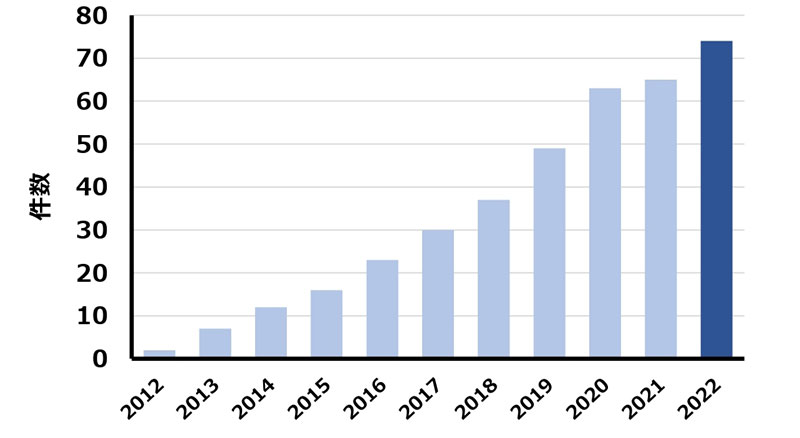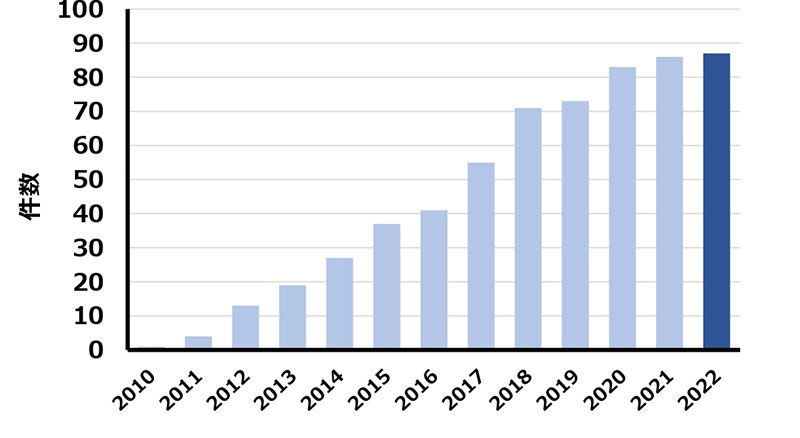MODEL LINEUP
STAM™ model
Our STAM™ model is a model that recapitulates the same disease progression as human MASH/NASH-HCC. In this model, male C57BL/6 mice aged two days are given a single dose of streptozotocin to reduce insulin secretory capacity. When the mice turn four weeks of age they start a high-fat diet feeding. This model has a background of late type 2 diabetes which progresses into fatty liver, NASH, fibrosis and consequently liver cancer (HCC). Compared to other MASH/NASH-HCC model mice, the disease progresses in a relatively short period of time, and liver cancer is developed in 100% of animals at 20 weeks of age.Thus, our model is widely used in MASH/NASH research, with more than 70 papers (seen left of the figure shown below) and 80 international conferences (listed right of the figure shown below) published using data from our STAM™ model so far.


Our STAM™ model is able to reproduce many of the pathological features of human NASH.
For example
- Ballooning degeneration of cells, a characteristic pathological feature of human NASH.
- Burned-out NASH, in which lipid droplets decrease as fibrosis progresses.
- Progression of fibrosis occuring around the central vein.
- A mild rise in ALT (a liver injury marker).
- Increase in NASH markers such as CK-18.
- Increase in human HCC markers such as: glutamine synthase, glypican-3 and AFP have been observed.
Recently, a comprehensive analysis of genomics, transcriptomics (Dow, M., et al) and lipidomics (Saito. K. et al) from domestic and international academia has demonstrated the high clinical correlation of our STAM model. There are 15 test substances that have entered the clinical stage using data from STAM model pharmacology studies, and are now showing efficacy against NASH
